Novella writing is a unique and rewarding experience that offers creative expression and storytelling opportunities. It is a form of storytelling that allows writers to explore complex themes, develop memorable characters and create immersive worlds in 20,000 to 40,000 words. Novellas can span a wide range of genres, from romance to science fiction. However, they always encourage writers to be economical with their words to keep the narrative tight and focused.
This article explores the essential components of novel writing, from character development to plot structure. It also closely examines key techniques and considerations for crafting a compelling and memorable story. Read on to learn everything you need to know before crafting your novella.
What is a novella?
Writing a novella is a unique endeavour that comes with its own set of characteristics and considerations. Here are some key points to keep in mind about the novella genre:
- Length: Novellas typically range between 20,000 to 40,000 words, making them longer than short stories but shorter than novels. This shorter length requires writers to be concise and focused, with a tighter narrative structure.
- Intensity: Novellas often pack a punch in terms of emotional impact and thematic depth. They have the space to explore complex characters and ideas but without the sprawling scope of a novel.
- Focus: Novellas focus on a single, central conflict or theme. This focused approach allows deep exploration and development within a more limited narrative space.
- Pacing: Due to their shorter length, novellas often have a brisk pace, with events unfolding quickly. Writers need to balance this pace with moments of reflection and character development to create a satisfying narrative rhythm.
- Characterisation: Strong, well-developed characters are essential in a novella. With fewer words available, every character needs to serve a specific purpose in advancing the plot or exploring the central themes.
- Setting: Novellas may feature a richly detailed setting, but the scope is usually narrower than novels. Writers should choose settings that enhance the story and contribute to its atmosphere and themes.
- Experimentation: The novella format allows for narrative structure, style and voice experimentation. Writers can play with different techniques to create a distinctive and memorable story.
- Market considerations: While the novella has a rich literary tradition, it may be less commercially viable than novels or short stories. Writers should be aware of market trends and consider publishing options that cater to the novella format, such as literary journals or small presses specialising in shorter fiction.
What is the difference between a novella and a novel, novelette or short story?
Novellas and novelettes occupy the middle ground between short stories and novels. Novellas typically range from 20,000 to 40,000 words, offering more depth and complexity than short stories but less than novels. Novelettes are shorter, usually around 7,500 to 20,000 words. Novels, the longest form, exceed 40,000 words, allowing for extensive character development, complex plots and exploration of multiple themes. Short stories, on the other hand, are concise narratives focusing on a single moment, event or character. Ranging from a few hundred to a few thousand words, they excel at capturing a single scene or idea with clarity and impact.
| Short story | Novelette | Novella | Novel | |
| Word count | 1,000–7,500 | 7,500–20,000 | 20,000–40,000 | 40,000 or more |
What types of novella are there?
Novellas can span a wide range of genres and styles, offering diverse reading experiences for audiences. Here are some common types of novellas:
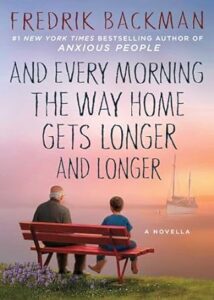
Literary novella
These novellas focus on character development and thematic exploration and often feature lyrical prose. They may delve into complex emotions, relationships and societal issues. For example, Every Morning the Way Home Gets Longer and Longer by Fredrik Backman tells the poignant story of an older adult grappling with dementia and his grandson, who is trying to come to terms with the impending loss of his beloved grandfather. Through lyrical prose and heartfelt storytelling, Backman explores themes of memory, family and the passage of time.
Historical novella
These novellas are set in a specific historical period and transport readers to a different time and place. They often blend historical events with fictional characters and storylines, offering insights into the past.
The Bridge of San Luis Rey by Thornton Wilder is set in Peru during the eighteenth century. This Pulitzer Prize-winning novella examines the lives of five people who perish when a bridge collapses. Through interconnected stories, Wilder explores themes of fate, love and the human condition against the backdrop of colonial Peru.
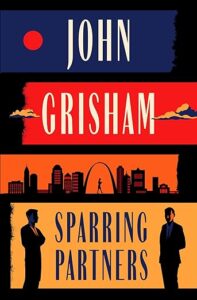
Mystery/thriller novella
Novellas in the mystery or thriller genre typically feature fast-paced plots, intriguing mysteries and suspenseful twists. They keep readers on the edge of their seats with gripping narratives and unexpected revelations.
‘Sparring Partners’ by John Grisham is a novella that falls under the genre of a legal thriller. In this novella, Grisham brings his expertise as a former lawyer to create a gripping story centred around legal conflicts, courtroom drama and moral dilemmas. While shorter than his full-length novels, ‘Sparring Partners’ likely retains many of the hallmarks of Grisham’s writing style, including intricate plots, suspenseful twists and complex characters.
Science fiction/fantasy novella
These novellas explore speculative worlds, futuristic technology and magical realms. They often feature imaginative concepts, epic adventures and fantastical elements that push the boundaries of reality.
An example of a sci-fi novella is Anthony Burgess’s A Clockwork Orange. Set in a dystopian future, it follows the ultra-violent protagonist, Alex, as he undergoes aversion therapy to cure his criminal behaviour. It inspired Stanley Kubrick’s controversial film adaptation (1971) of the same name.
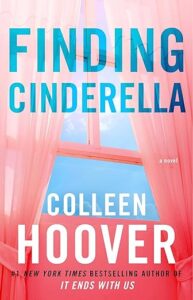
Romance novella
Novellas in the romance genre focus on developing romantic relationships and exploring love, passion and connection themes. They may range from sweet and heartwarming to steamy and sensual, catering to various romance subgenres.
For example, Finding Cinderella by Colleen Hoover is a novella that follows the romance between Daniel and Six, two characters from Hoover’s novel Hopeless. It explores themes of love, loss and second chances in a heartwarming and emotionally resonant story.
Horror novella
Horror novellas deliver spine-chilling thrills, eerie atmospheres and unsettling scenarios. They may feature supernatural entities, psychological terror or visceral horror, leaving readers feeling unsettled and haunted.
For instance, The Ballad of Black Tom by Victor LaValle is a contemporary reimagining of H. P. Lovecraft’s story ‘The Horror at Red Hook.’ It explores themes of racism, magic and cosmic horror in 1920s New York City.
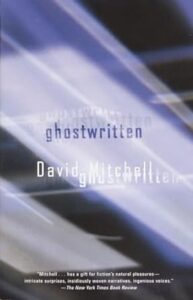
Experimental/avant-garde novella
These novellas push the boundaries of traditional storytelling, experimenting with structure, style and form. They may incorporate unconventional narrative techniques, fragmented storytelling or non-linear plots to challenge readers’ expectations.
While technically a novel, Ghostwritten by David Mitchell consists of interconnected novellas that span different time periods, genres and locations. In Ghostwritten, Mitchell, the New York Times bestselling author of The Bone Clocks and Cloud Atlas, experiments with structure and narrative style to create a complex and kaleidoscopic story.
Crossover novella
Novellas that blend elements from multiple genres, creating unique and hybrid reading experiences. They may combine elements of mystery with fantasy, romance with science fiction or literary fiction with speculative elements. Tomorrow and Tomorrow and Tomorrow by Gabrielle Zevin is an example of a genre-bending novella. This New York Times Best Seller follows two college friends and creative partners in the fascinating world of video game design. It is a fresh take on the love story trope spanning over thirty years. It examines the diverse nature of identity, disability, failure and the human need to connect, be loved and love.
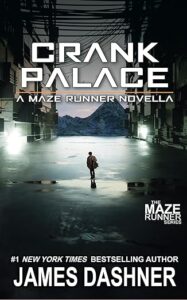
Young adult (YA) novella
Novellas target YA audiences, featuring relatable teenage protagonists, coming-of-age themes and engaging plots. They often explore themes of identity, friendship and self-discovery within a YA framework.
For an example of a YA novella, reach for Crank Palace by James Dashner, set in the Maze Runner series universe. It follows the character Newt as he navigates the deadly trials of the Maze and grapples with the moral dilemmas posed by the WICKED organisation.
Contemporary novella
Novellas set in modern times address contemporary issues, lifestyles and cultures. They may focus on realistic portrayals of everyday life, relationships and social dynamics.
An excellent example of a contemporary novella is Stephen King’s novella ‘The Body’ from the Different Seasons collection. ‘The Body’ chronicles a group of young boys’ journey to find the body of a missing boy, delving into themes of friendship, innocence and loss. It served as the basis for the film Stand by Me (1986), directed by Rob Reiner.
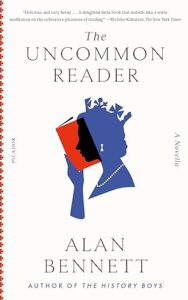
Humour/satire novella
Humour/satire novellas use wit, irony and exaggeration to critique societal norms, institutions or individuals, often through the lens of comedic storytelling. They delight readers with clever wordplay, absurd situations and sharp social commentary, offering entertainment and insights into the human condition.
The Uncommon Reader by Alan Bennett is a novella that could be categorised as literary fiction or humour/satire. It tells the story of Queen Elizabeth II, who stumbles upon a mobile library near Buckingham Palace and develops a newfound love for reading. The novella humorously explores themes of the transformative power of literature, the clash between duty and personal interests and the role of imagination in one’s life.
How to write a novella?
Here is a step-by-step guide to help you get started writing a novella:
Define your idea
Begin with a clear concept or idea for your novella. It could be a character, a setting, a theme or even just a single scene that sparks your imagination.
Outline
Create a rough outline of the plot. Identify key events, character arcs and the overall structure of your novella. This will serve as a roadmap as you write.
Develop characters
Flesh out your characters by giving them backgrounds, personalities, motivations and goals. The depth of your characters will drive the narrative and engage your readers.
Set the scene
Establish the setting of your novella. Describe the period, the location and any important details that will immerse your readers in the story.
Start writing
Begin writing your novella, following your outline but allowing for flexibility as your story evolves. Focus on crafting engaging prose and developing the plot and characters organically.
Maintain momentum
Aim to write consistently, even if it is just a little bit each day. This will help you stay connected to your story and prevent writer’s block.
Edit and revise
Once you have completed a draft, take time to revise and edit your work. Pay attention to structure, pacing, character consistency and language use. Consider seeking feedback from beta readers or joining a writing group for additional perspectives.
Polish your prose
Refine your writing by paying attention to sentence structure, word choice and overall style. Make sure every word serves a purpose and contributes to the mood and tone of your novella.
Finalise your manuscript
Once you are satisfied with your revisions, proofread your novella for errors or typos. If you submit it for publication, format your manuscript according to publishing guidelines.
Consider publishing options
Decide whether you want to publish your novella through traditional or self-publishing. If you choose the traditional route, research agents and publishers, or explore platforms like Amazon Kindle Direct Publishing if you prefer self-publishing.
Tips and tricks for writing a novella
Start with a strong concept
Begin with a clear and compelling idea for your novella. A strong concept will provide a solid foundation for your story, whether it is a character, a setting or a theme.
Outline the plot
Create a rough outline of your novella’s main events and key plot points. This will help you stay focused and organised as you write, preventing you from getting lost in the narrative.
Focus on character development
Despite the shorter length of a novella, make sure to develop your characters fully. Give them depth, backstory and motivations that drive the story forward.
Limit the number of characters
Since novellas are shorter, it is best to keep the number of characters to a minimum. Focus on a small cast of characters who are essential to the story.
Keep the scope narrow
Novellas thrive on a tight, focused narrative. Keep the scope of your story narrow, focusing on one central conflict or theme rather than trying to cover too much ground.
Maintain momentum
Keep the pacing of your novella brisk to hold the reader’s interest. Aim to move the story forward with each scene, avoiding unnecessary tangents or exposition.
Use vivid imagery
Make every word count by using vivid imagery and sensory details to bring your story to life. Show, do not tell, and engage the reader’s senses to create a rich and immersive reading experience.
Embrace conciseness
Embrace the challenge of writing concisely in a novella. Be economical with your words, cutting out any unnecessary scenes or descriptions to keep the narrative tight and focused.
Experiment with structure
Since novellas have a shorter length, they offer opportunities for experimentation with structure and form. Play with non-linear narratives, multiple points of view or unconventional storytelling techniques to create a unique and memorable reading experience.
Self-edit
Once you have completed a draft of your novella, take time to revise and edit it. Pay attention to pacing, characterisation and plot coherence and consider seeking feedback from beta readers or writing groups to help you refine your story.
Work with an editor
Consider seeking the assistance of a professional editor to finalise your novella. A skilled editor can provide valuable feedback on your manuscript, helping you identify areas for improvement in structure, characterisation or language use.
- Developmental editing: A developmental editor can assist in refining the concept and plot of your novella. They will help you ensure that your story’s central idea is clear and compelling. Additionally, they can provide feedback on your outline, helping you strengthen the plot’s coherence and identify areas where the narrative may need further development. Their input can also help maintain focus on character development and limit the number of characters, ensuring that each character serves a vital role in the story.
- Line editing: Line editing focuses on the clarity and effectiveness of your prose. A line editor can help you maintain momentum by ensuring that each sentence serves a purpose and contributes to the overall flow of the narrative. They can assist in using vivid imagery to create a rich and immersive reading experience, complementing the advice to use vivid imagery and embrace conciseness. Line editing also involves tightening the language and eliminating unnecessary words or phrases.
- Copyediting: Copyediting involves correcting grammar, punctuation, spelling and style errors. A copyeditor ensures that your novella adheres to the conventions of standard English usage, enhancing readability and professionalism. They can also help with experimenting with structure by ensuring that any unconventional formatting or stylistic choices are consistent and effectively executed.
- Proofreading: Proofreading is the final stage of editing, focusing on identifying and correcting any remaining errors before publication. A proofreader can catch typos, formatting inconsistencies and minor errors that may have been overlooked in earlier editing stages.
Key takeaways
In crafting your novella, remember to begin with a strong concept that forms a solid foundation for your story. Develop your characters fully, ensuring they have depth, backstory and motivations that drive the narrative forward. Keep the number of characters limited to maintain focus and coherence within the shorter format.
As you outline the plot, prioritise a clear and compelling storyline while maintaining a tight, focused narrative. Use vivid imagery and sensory details to bring your story to life, engaging the reader’s senses for a rich and immersive reading experience. Embrace the challenge of writing concisely: be economical with your words to keep the narrative tight and focused.
Experiment with structure and form, taking advantage of the novella’s shorter length to explore unconventional storytelling techniques. Once you have completed a draft, engage in thorough self-editing to refine your work, paying attention to pacing, character development and plot coherence. Consider seeking the assistance of a professional editor to provide valuable feedback and ensure your novella is polished and ready for publication.
Contact me for a free sample edit of your novella (and remember to use my early bird discount). I am an experienced editor working with non-fiction, academic and business texts. I can help prepare your text for publication, from a big-picture analysis through highlighting your authorial voice to ensuring the correctness and consistency of the language.


